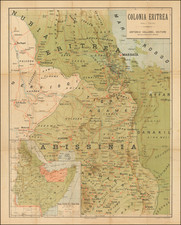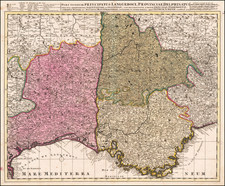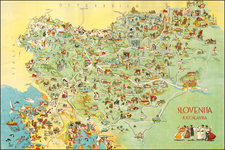Decorative and highly detailed antique map of the Gulf of Venice and the Adriatic Sea, published by Vincenzo Maria Coronelli in Venice in 1688.
The map Includes an ornate cartouche with 23 city plans in medallions and a large coat of arms.
The second cartouche, in the upper-right corner, includes a large coat of arms of the Republic of Venice, depicting the lion of St. Mark holding a book that reads "Pax tibi Marce, Evangelista meus." (Peace be to you Mark, my evangelist).
There are over a dozen other coats of arms on the map itself. One of the most decorative of all 17th-century maps of the region.
When this map was published in 1688 Venice was early in the Morean War, and had gained significant possessions at the expense of the Ottoman Empire.
Vincenzo Maria Coronelli (1650-1718) was one of the most influential Italian mapmakers and was known especially for his globes and atlases. The son of a tailor, Vincenzo was apprenticed to a xylographer (a wood block engraver) at a young age. At fifteen he became a novice in a Franciscan monastery. At sixteen he published his first book, the first of 140 publications he would write in his lifetime. The order recognized his intellectual ability and saw him educated in Venice and Rome. He earned a doctorate in theology, but also studied astronomy. By the late 1670s, he was working on geography and was commissioned to create a set of globes for the Duke of Parma. These globes were five feet in diameter. The Parma globes led to Coronelli being named theologian to the Duke and receiving a bigger commission, this one from Louis XIV of France. Coronelli moved to Paris for two years to construct the King’s huge globes, which are 12.5 feet in diameter and weigh 2 tons.
The globes for the French King led to a craze for Coronelli’s work and he traveled Europe making globes for the ultra-elite. By 1705, he had returned to Venice. There, he founded the first geographical society, the Accademia Cosmografica degli Argonauti and was named Cosmographer of the Republic of Venice. He died in 1718.













![(Monaco to Grimaldi di Ventimiglia) Carte des Costes d'Italie depuis Monaco jusqu'a La pointe de Murtera [Map of the Coasts of Italy from Monaco to the Point of Murtera]](https://storage.googleapis.com/raremaps/img/small/92355.jpg)
